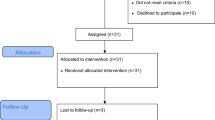Abstract
Community-based service providers often hire youth living with HIV (YLH) as peer leaders for delivering HIV education to uninfected adolescents. Life narratives were collected from 44 YLH during a hypotheses-generating two-year ethnographic study. About 30% of the youth were employed as peer educators. While 60% of the 44 youth had a lower-class background, only 23% of the peer leaders were lower class. One-fifth of the sample were female, but more than one-half of the peer leaders were female. After identifying and categorizing difficulties experienced by the peer leaders, a frequency count of each theme was conducted. Issues about professional boundaries were evident in 38.5% of the youth's narratives, indicating conflicts in their roles as peer leaders; 23% of the youth engaged in substance use and sexual behaviors that placed themselves and uninfected youth in their peer educator programs at risk; and 8% of the youth reported relapse while peer leaders. The observations suggest reconsideration or restructuring of existing peer-education models that employ YLH.
Similar content being viewed by others
REFERENCES
Baker, R. (1994, April 5). Board of Ed's AIDS council doesn't want (KIDS) to know. Village Voice, pp. 11–14.
Bandura, A. (1992). A social cognitive approach to the exercise of control over AIDS infection. In R. J. DiClemente (Ed.), Adolescents and AIDS: A generation in jeopardy (pp. 89–116). Newbury Park, CA: Sage Publications.
Bowen, G. S., Marconi, K., Kohn, S., Bailey, D. M., Goosby, E. P., Shorter, S., & Niemeryk, S. (1992). First year of AIDS services delivery under Title I of the Ryan White CARE Act. Public Health Reports, 107(5), 491–9.
Brown, J., & Langley, J. (1991). Interviewer as instrument: Qualitative data collection and analysis using the principles of gestalt and confluent education. Unpublished manuscript, Southest Regional Laboratory, Los Alamitos, California.
Catania, J. A., Coates, T. J., Kegeles, S. M., Ekstrand, M., & Guydish, J. (1989). Implications of the AIDS Risk Reduction Model for the gay community: The importance of perceived sexual enjoyment and help-seeking behaviors. In V. Mays, G. Albee, & J. Schneider (Eds.), Psychological approaches to the prevention of AIDS (Vol. 13, pp. 242–261). Newbury Park, CA: Sage Publications.
Cranston, K. (1991). HIV education for gay, lesbian, and bisexual youth: Personal risk, personal power, and the community of conscience. Journal of Homosexuality, 22(3–4), 247–259.
Durkheim, E. (1957). Professional ethics and civic morals (C. Brookfield, Trans.). London: Routledge & Kegan Paul.
Gitterman, A., & Shulman, L. (eds.). (1994). Mutual aid groups, vulnerable populations, and the life cycle (2nd ed.). New York: Columbia University Press.
Glaser, E., & Strauss, A. (1967). The discovery of grounded theory: Strategies for qualitative research. New York: Aldine Publishing.
Goffman, E. (1962). Asylums: Essays on the social situation of mental patients and other inmates. Chicago: Aldine Publishing Co.
Goffman, E. (1963). Stigma: Notes on the management of spoiled identity. Englewood Cliffs, NJ: Prentice-Hall.
Levine, O., Britton, P., James, T., Jackson, A., Hobfoll, S., & Lavin, J. (1993). The empowerment of women: A key to HIV prevention. Journal of Community Psychology, 21(4), 320–334.
Maton, K. I., & Salem, D. A. (1995). Organizational characteristics of empowering community settings. American Journal of Community Psychology, 23, 631–656.
McWhirter, E. H. (1994). Counseling for empowerment. Alexandria, VA: American Counseling Association.
Rappaport, J. (1995). Empowerment meets narrative: Listening to stories and creating settings. American Journal of Cummunity Psychology, 23, 795–807.
Ross, M. W., Tebble, W. E., & Viliunas, D. (1989). Staging of psychological reactions to HIV infection in asymptomatic homosexual men. Journal of Psychology and Human Sexuality, 2(1), 93–104.
Rotheram-Borus, M. J., Koopman, C., & Rosario, M. (1992). Developmentally tailoring prevention programs: Matching strategies to adolescents' serostatus. In R. J. DiClemente (Ed.), Adolescents and AIDS: A generation in jeopardy (pp. 212–229). Newbury Park, CA: Sage Publications.
Strauss, A., & Corbin, J. (1990). Basics of qualitative research. Newbury Park, CA: Sage Publications.
Wallerstein, N., & Bernstein, E. (1987). Empowerment education: Friere's ideas adapted to health education. Health Education Quarterly, 14, 379–394.
Whirry, R. (1993, May). On empowering youth as an approach to adolescent HIV education. San Francisco Department of Public Health, Special Programs for Youth Services.
Author information
Authors and Affiliations
Rights and permissions
About this article
Cite this article
Luna, G.C., Rotheram-Borus, M.J. Youth Living with HIV as Peer Leaders. Am J Community Psychol 27, 1–23 (1999). https://doi.org/10.1023/A:1022861610985
Issue Date:
DOI: https://doi.org/10.1023/A:1022861610985




